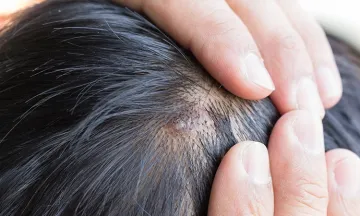The Migraine Calling – Prodrome and Aura
At about two o’clock in the afternoon, Rashi got that familiar feeling. It started with sparkling flashes that seemed to lurk just behind her vision, followed soon after by an upset stomach and a darkening mood. As the pressure gradually increased over her left eye, she knew a crushing headache was on its way.
When Rashi first became a patient, she reported at least seven similar episodes a month and the frequency had been gradually escalating for about 5 months. After doing a physical exam and taking a complete medical history that included reviewing her headache, medication log, family health history, and lifestyle, it was quickly apparent that Rashi suffers from migraine.
Though certainly, not everyone experiences a migraine the same way or even the same way every time, Rashi’s description of the onset of a migraine attack is fairly typical. And if you have severe headaches like this, then you understand that a migraine is more than just a headache – it is a broader set of changes that can occur throughout the body although not all of the migraine symptoms are evident in every person who has the disorder.
Prodrome and Aura
Some people use the term migraine to describe any relentless headaches, but not all severe headaches are migraine nor are all migraine severe, although many do live up to their reputation for excruciating pain. Typically, the early sensations that Rashi describes are known as prodromal symptoms or the prodrome, and they warn that a migraine headache is about to commence.
Some migraines are preceded by an aura. The word aura is used to describe the visual, language, or sensory disturbances some people experience before they get a migraine. These might include seeing things such as halos, bursts of lights or flashing zigzag lines (scintillations). These are often referred to as “positive aura symptoms” since they involve seeing something. There are also “negative aura symptoms” which involve a loss of vision, either partially or completely. Most auras include a mixture of these positive and negative symptoms and often change over time. This phenomenon lasts between twenty minutes and an hour and is often not always followed by headache and other typical symptoms of migraine. In Rashi’s case, it’s a sparkling sensation she refers to as a ghost headache because it often portends the pain to come.
The majority of migraines develop without an aura. The migraine headache symptoms, with or without an aura, tend to produce pain that usually begins (and sometimes stays) on one side of the head. Many people also experience nausea, extreme sensitivity to light or sound, or both. But, as with an aura, you need to be careful about generalizing: some studies have found that about 40 percent of migraine sufferers have pain on both sides of the head, not just one, and children with migraines usually have pain on both sides; some people experience a shifting of pain from one side to the other during an episode.
Both the frequency and the duration of migraine headaches symptoms vary from person to person. Without effective migraine treatment, headaches usually last 4 to 72 hours in adults. And, on occasion, they can persist for days, especially in women who have these headaches before or during menstruation – and that’s why early treatment is so important.
Also Read: Women and Migraine: What’s the link?
Migraine treatment
You can seek the help of homeopathy for migraine treatment. Homeopathic medicines for migraine have proven to be effective in treating migraine holistically from the root. Homeopathy applies the concept of individualization, which means that even if two people are suffering from the same types of migraine, they would not be given the same homeopathic medicines for migraine. Click here to know about 5 best remedies in homeopathy that can help fight migraine
A homeopathic doctor will study the whole case history of each of the patients — their exact nature of migraine symptoms, temperament, feelings, likes and dislikes, causes of migraine — and then suggest homeopathic medicines for migraine suitable for each of them to ascertain deep-rooted and permanent cures.
To consult our homeopathic experts for individualized migraine treatment, book an appointment at https://www.drbatras.com/book-an-appointment




